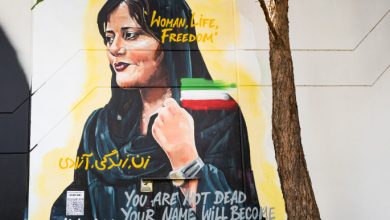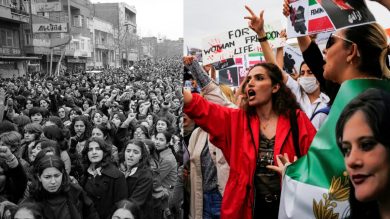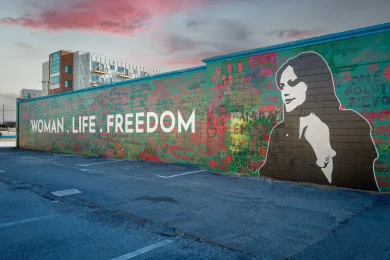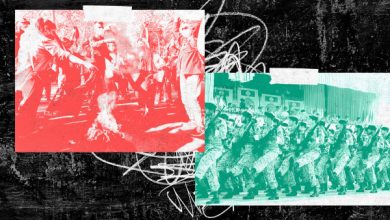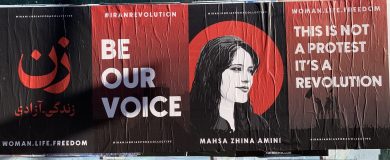In Iran, women have emerged as powerful leaders in the fight for freedom and equality, defying a regime that has long sought to suppress their voices and limit their rights. From standing at the forefront of protests to resisting discriminatory laws, Iranian women have become the face of a broader movement against authoritarianism and oppression. Their struggle is not just about gender equality; it is a fight for justice, dignity, and a better future for all Iranians.
This article examines the pivotal role of Iranian women in the ongoing resistance, the unique challenges they face, and the ways in which the global community can support their fight for freedom.
The Historical Roots of Women’s Resistance in Iran
The fight for women’s rights in Iran predates the 1979 Islamic Revolution, with Iranian women historically playing key roles in the nation’s political and social transformations.
1. Women’s Rights Before the Revolution
• During the Pahlavi era (1925–1979), women made significant gains, including access to education, voting rights, and greater participation in the workforce.
• However, these reforms were often top-down, leaving many women feeling disconnected from the state-led modernization efforts.
2. Post-Revolutionary Regression
• The 1979 Islamic Revolution marked a turning point, with the new regime implementing strict Islamic laws that rolled back women’s rights.
• Mandatory hijab laws, gender segregation, and restrictions on employment and personal freedoms became tools for controlling women and reinforcing patriarchal power.
3. A Legacy of Resistance
• From the earliest days of the revolution, Iranian women resisted these changes, organizing protests and speaking out against gender-based oppression. This legacy of resistance continues today, inspiring new generations to demand change.
The Role of Women in Iran’s Modern Resistance
Iranian women have become the leading voices in the country’s struggle for freedom, turning personal acts of defiance into powerful symbols of resistance.
1. Protesting Mandatory Hijab Laws
• Women have long resisted Iran’s mandatory hijab laws, beginning with large-scale protests in 1979 and continuing with movements like “White Wednesdays” and “Girls of Revolution Street.”
• These acts of defiance, such as removing headscarves in public, challenge not only the regime’s dress codes but also its broader authoritarian control.
2. Leading Nationwide Protests
• Women played a central role in the 2022 protests following the death of Mahsa Amini, a 22-year-old Kurdish woman arrested for allegedly violating hijab laws.
• Chanting “Women, Life, Freedom,” women-led demonstrations quickly grew into a nationwide movement calling for systemic change.
3. Advocating for Broader Reforms
• Beyond gender equality, Iranian women are at the forefront of movements demanding economic justice, political reform, and human rights for all Iranians.
• Their activism challenges intersecting forms of oppression, from class inequality to ethnic and religious discrimination.
Challenges Faced by Women Activists
The regime’s repressive tactics disproportionately target women, who often face unique challenges in their fight for freedom.
1. State Violence and Repression
• Women protesters are frequently met with brutal force, including physical violence, arrests, and sexual assault in custody.
• The regime uses these tactics to intimidate and silence women, but they often have the opposite effect, strengthening women’s resolve.
2. Cultural and Social Barriers
• Beyond state repression, women face cultural and societal expectations that discourage dissent and prioritize traditional gender roles.
• Activists must navigate these barriers while advocating for broader cultural change.
3. Economic and Legal Discrimination
• Women in Iran face systemic inequality in areas like inheritance, child custody, and employment, which limits their autonomy and economic independence.
• These structural inequalities exacerbate the challenges faced by women activists, making their resistance even more remarkable.
Stories of Courage: Women Leading the Fight
The struggle for freedom in Iran is embodied in the stories of women who have risked everything for change. Here are just a few examples:
1. Nasrin Sotoudeh
A prominent human rights lawyer, Nasrin Sotoudeh has defended countless activists, journalists, and women arrested for protesting mandatory hijab laws. Despite multiple prison sentences and harsh conditions, she remains a fearless advocate for justice.
2. Narges Mohammadi
As a leading voice in the fight against the death penalty and for women’s rights, Narges Mohammadi has endured years of imprisonment and harassment. Her resilience continues to inspire activists in Iran and beyond.
3. Sepideh Rashno
Arrested for challenging the regime’s hijab laws, Sepideh Rashno became a symbol of resistance when videos of her mistreatment in custody sparked outrage. Her bravery underscores the high stakes of women’s activism in Iran.
4. The Women of Mahsa Amini Protests
From students to mothers, women across Iran took to the streets in 2022, defying curfews and police violence. Their chants of “Women, Life, Freedom” have become a global rallying cry for gender equality and human rights.
Global Solidarity: How the World Can Support Iranian Women
The courage of Iranian women demands a global response. The international community has a moral obligation to amplify their voices and provide meaningful support.
1. Amplifying Women’s Voices
• Media Coverage: International media must prioritize stories of Iranian women activists, ensuring their struggle remains in the global spotlight.
• Social Media Advocacy: Campaigns like #MahsaAmini and #WomenLifeFreedom have proven effective in mobilizing global support.
2. Applying Diplomatic Pressure
• Targeted Sanctions: Sanctions on officials and entities responsible for gender-based repression can weaken the regime’s ability to suppress women’s movements.
• UN Action: International bodies should hold Iran accountable for its treatment of women through resolutions and investigations.
3. Providing Safe Havens
• Asylum for Activists: Countries should offer protection to women fleeing persecution, allowing them to continue their advocacy in safety.
• Scholarships and Fellowships: Educational opportunities for exiled activists empower them to amplify their voices on the global stage.
4. Supporting Women-Led Movements
• Funding and Resources: NGOs and governments can support grassroots organizations working to promote women’s rights in Iran.
• Capacity Building: Training programs for activists can strengthen their ability to organize and advocate effectively.
5. Recognizing Women’s Leadership
• Women’s contributions to resistance movements must be celebrated and centered in global advocacy efforts, reinforcing their role as leaders of change.
Why Women’s Resistance Matters
The fight for women’s rights in Iran is about more than gender equality—it is a fight for the soul of the nation. Women’s leadership in the resistance movement challenges the very foundations of the regime’s authoritarian rule, offering a vision of a more just and inclusive society.
1. Women as Catalysts for Broader Change
• Women’s activism often sparks broader movements for political and social reform, uniting diverse groups in the fight against oppression.
2. Defying the Regime’s Ideology
• By resisting the regime’s gender-based policies, women undermine its ideological legitimacy and expose its failure to uphold basic human rights.
3. Inspiring Global Movements
• The courage of Iranian women resonates worldwide, inspiring solidarity movements and reinforcing the universality of the fight for freedom and equality.
Conclusion
Iranian women are leading a historic fight for freedom, standing at the forefront of a movement that seeks to dismantle decades of oppression and inequality.Their courage, resilience, and vision for change offer hope not only to Iranians but to the world. As they break the chains of repression, their struggle reminds us of the power of collective action and the importance of global solidarity. The international community must stand with these women, amplifying their voices and supporting their fight for a future defined by justice, dignity, and equality.
Join Our Newsletter!
Stay informed with the latest updates, news, and ways to take action in the fight for justice and global security. Sign up now to get updates delivered straight to your inbox!

